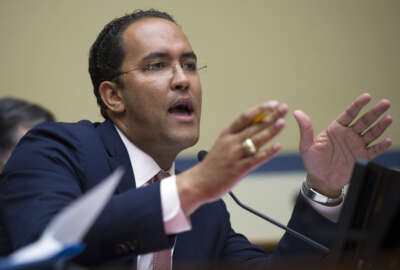
NDAA grants funds for special agency IT modernization projects
NDAA gives agencies special funds for contractors dedicated to modernizing IT systems, cybersecurity, etc.
Subscribe to Federal Drive’s daily audio interviews on iTunes or PodcastOne.
The National Defense Authorization Act (NDAA) of 2018 gave federal agencies at least some of what they’ve wanted for years. Namely, a special pot of money dedicated to modernize IT systems and the services they deliver.
That will change how IT is marketed and sold this year. Agencies already set aside money for these procurement projects. But the governmentwide increase could help speed up progress, according to Bloomberg Government’s Dan Snyder.
“That is one that I think a lot of contractors will be keeping their eye on to see how that progress transpires,” Snyder, deputy director of government contracts and research at BGov, said on Federal Drive with Tom Temin. “Another topic, which Bloomberg Government will be continuing to watch is how agencies will save money for innovative projects in the future.”
A good amount — around 40 percent — of IT purchasing is done in the fourth quarter of a fiscal year. Snyder said implementation of the Modernizing Government Technology Act, included in NDAA, could influence and encourage agencies to save even more toward the end of the year.
The MGT Act builds on the Federal IT Acquisition Reform Act (FITARA) to give agency chief information officers access to much-needed money to move off legacy IT systems.
When an agency puts modernization money to use, they have to make a plan to replace it in their budget. It is a revolving fund for the modernization projects believed to be most crucial.
“That’s exactly correct … They can’t use it for operations and management,” Snyder said. “It will be for modernizing new systems. It will be interesting to see what types of projects they deem no longer necessary in favor of modernizing the systems and making them more efficient.”
While many legacy systems are outdated, they can often be difficult to overhaul. But it is in the federal government’s best interest to update their systems to fit in with the digital era and to provide more stability and security.
The Defense Department has also increased its use of other transaction authority (OTA) in terms of spending. Agencies have also put more effort into forming consortia, or financial associations, that will give them access to white papers. These papers are focused on issues, such as systems or programs that need to be updated, and companies can weight in and bid on new work, Snyder said.
“It’s an innovative acquisition method that is getting a lot of positive feedback based on the success that its had and they’re leveraging it more so on some of these innovative ways to buy technology such as cybersecurity and insider threat [services],” he said. “It’s geared towards helping small businesses.”
Defense audit
Bloomberg Government has begun tracking the amount of consortia. Snyder said the current estimate is about 20 organizations where DoD may play a part, with more being established. He said more information will become known when the agency completes its first full-financial audit.
The audit could uncover inevitable shortfalls found at the department. In turn, financial service companies may see this as an opportunity to help them with financial management and accountability.
One issue that cannot be sidestepped however is the fate of category management — something BGov has been tracking for years. In some cases, contracts are awarded to companies based on where they fall on the spectrum.
Mid-tier companies — those who possess an annual revenue of $25 billion to $500 million — are getting squeezed out.
“The pendulum has switched to focusing on which contracts are best-in-class or offer the best pricing to the agencies and offer the best solution on those vehicles,” Snyder said. “I don’t think that’s surprising. I think it’s part of the game. I think they have to remain competitive.”
About 25 percent of government contract spending is being accessed through 27 best-in-class contracts. Some names are: Alliant, IT Schedule 70, OASIS and NASA SEWP.
But, barriers such as standard calculation procedures within agencies and potential timing restrictions may prevent companies from accessing an agency’s contract.
Snyder said both the defense audit and passage of a final 2018 fiscal budget could help streamline this process.
Copyright © 2025 Federal News Network. All rights reserved. This website is not intended for users located within the European Economic Area.
Steff Thomas is a digital editor at Federal News Network.





